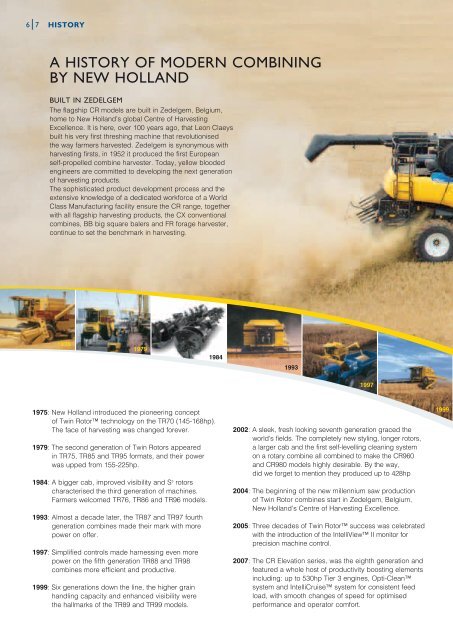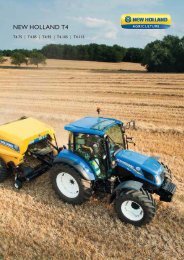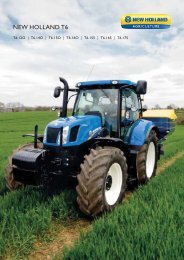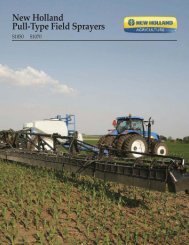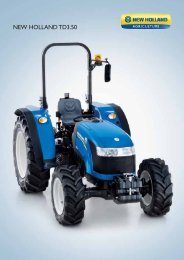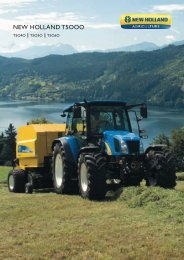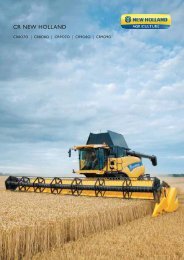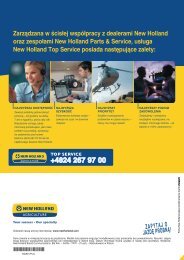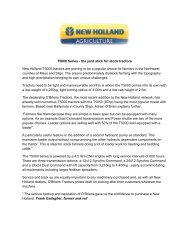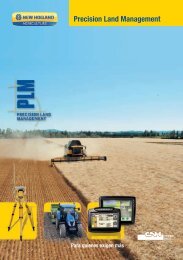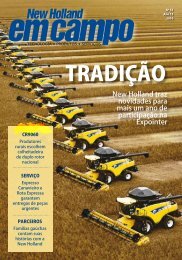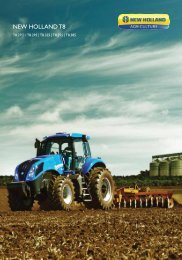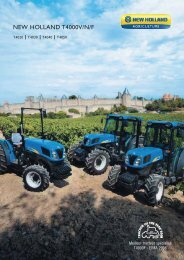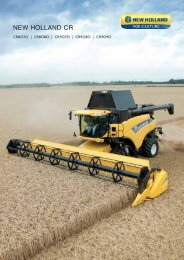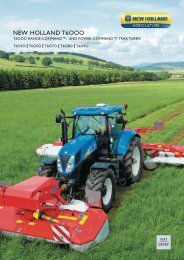NEW HOLLAND CR
NEW HOLLAND CR
NEW HOLLAND CR
You also want an ePaper? Increase the reach of your titles
YUMPU automatically turns print PDFs into web optimized ePapers that Google loves.
6 7<br />
History<br />
A history of modern combining<br />
by New Holland<br />
Built in Zedelgem<br />
The flagship <strong>CR</strong> models are built in Zedelgem, Belgium,<br />
home to New Holland’s global Centre of Harvesting<br />
Excellence. It is here, over 100 years ago, that Leon Claeys<br />
built his very first threshing machine that revolutionised<br />
the way farmers harvested. Zedelgem is synonymous with<br />
harvesting firsts, in 1952 it produced the first European<br />
self-propelled combine harvester. Today, yellow blooded<br />
engineers are committed to developing the next generation<br />
of harvesting products.<br />
The sophisticated product development process and the<br />
extensive knowledge of a dedicated workforce of a World<br />
Class Manufacturing facility ensure the <strong>CR</strong> range, together<br />
with all flagship harvesting products, the CX conventional<br />
combines, BB big square balers and FR forage harvester,<br />
continue to set the benchmark in harvesting.<br />
1975<br />
1979<br />
1984<br />
1993<br />
1997<br />
1975: New Holland introduced the pioneering concept<br />
of Twin Rotor technology on the TR70 (145-168hp).<br />
The face of harvesting was changed forever.<br />
1979: The second generation of Twin Rotors appeared<br />
in TR75, TR85 and TR95 formats, and their power<br />
was upped from 155-225hp.<br />
1984: A bigger cab, improved visibility and S 3 rotors<br />
characterised the third generation of machines.<br />
Farmers welcomed TR76, TR86 and TR96 models.<br />
1993: Almost a decade later, the TR87 and TR97 fourth<br />
generation combines made their mark with more<br />
power on offer.<br />
1997: Simplified controls made harnessing even more<br />
power on the fifth generation TR88 and TR98<br />
combines more efficient and productive.<br />
1999: Six generations down the line, the higher grain<br />
handling capacity and enhanced visibility were<br />
the hallmarks of the TR89 and TR99 models.<br />
2002: A sleek, fresh looking seventh generation graced the<br />
world’s fields. The completely new styling, longer rotors,<br />
a larger cab and the first self-levelling cleaning system<br />
on a rotary combine all combined to make the <strong>CR</strong>960<br />
and <strong>CR</strong>980 models highly desirable. By the way,<br />
did we forget to mention they produced up to 428hp<br />
2004: The beginning of the new millennium saw production<br />
of Twin Rotor combines start in Zedelgem, Belgium,<br />
New Holland’s Centre of Harvesting Excellence.<br />
2005: Three decades of Twin Rotor success was celebrated<br />
with the introduction of the IntelliView II monitor for<br />
precision machine control.<br />
2007: The <strong>CR</strong> Elevation series, was the eighth generation and<br />
featured a whole host of productivity boosting elements<br />
including: up to 530hp Tier 3 engines, Opti-Clean<br />
system and IntelliCruise system for consistent feed<br />
load, with smooth changes of speed for optimised<br />
performance and operator comfort.<br />
1999


